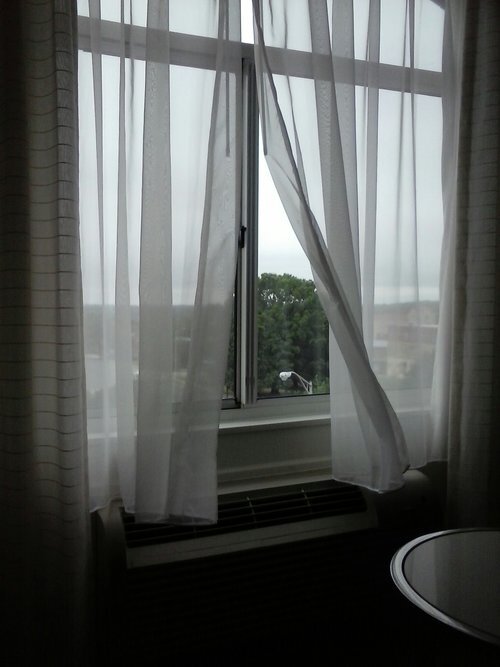6 Things To Know About Drapery Billowing
Did you know that billowing can effect more than how a drape hangs? Luckily it can be avoided! Continue reading to discover six important things about billowing. If you want more information on this topic, check out our blog post called, All you need to Know About Drapery Batons for the Hospitality Industry
Those pictures show billowing “at it’s finest”! Now, let’s dive in and take a look at some important things to know. We’ll briefly show you how drapery interacts with the A/C units, so it’s easier to understand why billowing happens and what you can do to help lessen it!
Understanding Drapery
The Spacing
1. Window treatments require 3” of depth behind and in front of the track to both operate properly and hang aesthetically. Therefore, a two-track treatment (i. e. sheer and blackout) will place the front most drapery 6” into the guestroom.
The Length
2. Drapery treatments are also designed to finish ½” to ¾” above the finished floor or window sill, minimizing the light escaping below the treatments.
PTAC Units And Drapery
3. If PTAC units have vertical louvers or inadequate depth behind the vent, drapery treatments will often sit directly above air flow minimizing the flow of air into the room.
4. Displaced air (often trapped behind the drapery) prevents the room from properly cooling and billows the drapery into the room.
The Help!
5. If unable to extend depth behind vent opening and/or unable to redirect discharge louvers, a PTAC deflector will likely be required.
6. Offered in various widths, depths and angles, deflectors allow air to properly vent the room without affecting drapery treatments.
We hope the information in this post gave you some helpful tips for your next project! We have put this information in a downloadable PDF card so you can print it and keep it near you!
Visit us again for more drapery related tips!
Check Out More Drapery Related Resources











